 W
WLists of U-boats cover U-boats, military submarines operated by Germany, particularly in the First and Second World Wars.List of German U-boats List of U-boat types of Germany List of U-boat flotillas of Germany List of U-boats never deployed of World War II Germany Uncompleted U-boat projects of World War II Germany List of most successful German U-boats of Germany for kill tonnage in World War I and World War II Foreign U-boats of World War II Germany List of Austro-Hungarian U-boats
 W
WU-boats were naval submarines operated by Germany, particularly in the First and Second World Wars. Although at times they were efficient fleet weapons against enemy naval warships, they were most effectively used in an economic warfare role and enforcing a naval blockade against enemy shipping. The primary targets of the U-boat campaigns in both wars were the merchant convoys bringing supplies from Canada and other parts of the British Empire, and from the United States, to the United Kingdom and to the Soviet Union and the Allied territories in the Mediterranean. German submarines also destroyed Brazilian merchant ships during World War II, causing Brazil to declare war on both Germany and Italy on 22 August 1942.
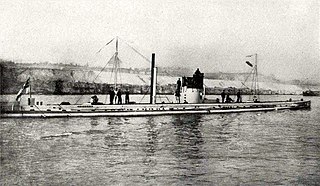 W
WThe Atlantic U-boat campaign of World War I was the prolonged naval conflict between German submarines and the Allied navies in Atlantic waters—the seas around the British Isles, the North Sea and the coast of France.
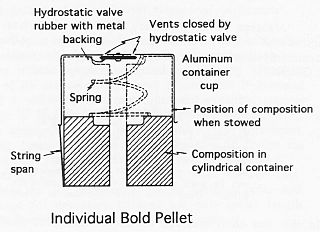 W
WBold was a German sonar decoy, used by U-boats during the Second World War from 1942 onwards. It consisted of a metal canister about 10 cm (3.9 in) in diameter filled with calcium hydride. It was launched by an ejector system colloquially referred to as Pillenwerfer.
 W
WThe U-boat Campaign from 1914 to 1918 was the World War I naval campaign fought by German U-boats against the trade routes of the Allies. It took place largely in the seas around the British Isles and in the Mediterranean. The German Empire relied on imports for food and domestic food production and the United Kingdom relied heavily on imports to feed its population, and both required raw materials to supply their war industry; the powers aimed, therefore, to blockade one another. The British had the Royal Navy which was superior in numbers and could operate on most of the world's oceans because of the British Empire, whereas the Imperial German Navy surface fleet was mainly restricted to the German Bight, and used commerce raiders and unrestricted submarine warfare to operate elsewhere.
 W
WThe Battle of the Caribbean refers to a naval campaign waged during World War II that was part of the Battle of the Atlantic, from 1941 to 1945. German U-boats and Italian submarines attempted to disrupt the Allied supply of oil and other material. They sank shipping in the Caribbean Sea and the Gulf of Mexico and attacked coastal targets in the Antilles. Improved Allied anti-submarine warfare eventually drove the Axis submarines out of the Caribbean region.
 W
WOperation Deadlight was the code name for the Royal Navy operation to scuttle German U-boats surrendered to the Allies after the defeat of Germany near the end of World War II.
 W
WOperation Juno was a German naval offensive late in the Norwegian Campaign. The German ships involved were the battleships Scharnhorst and Gneisenau, the heavy cruiser Admiral Hipper and the destroyers Z20 Karl Galster, Z10 Hans Lody, Z15 Erich Steinbrinck and Z7 Hermann Schoemann.
 W
WList of successful U-boats contains lists of the most successful German U-boats in the two World Wars based on total tonnage.
 W
WThe Mediterranean U-boat Campaign in the Mediterranean Sea was fought by Austria-Hungary and German Empire against the Allies during World War I. It was characterised by the ability of the Central Powers to raid with near impunity during the first years of the war, causing substantial shipping losses, until the introduction of the convoy system allowed the Allies to drastically cut their losses from 1917 on.
 W
WThe Mediterranean U-boat Campaign lasted from about 21 September 1941 to 19 September 1944 during the Second World War. Malta was an active British base strategically located near supply routes from Europe to North Africa. Axis supply convoys across the Mediterranean Sea suffered severe losses, which in turn threatened the fighting ability of the Axis armies in North Africa. The Allies were able to keep their North African armies supplied. The Kriegsmarine tried to isolate Malta but later it concentrated its U-boat operations on disrupting Allied landing operations in southern Europe.
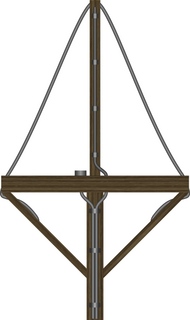 W
WThe R600A Metox, named after its manufacturer, was a pioneering high-frequency radar warning receiver (RWR) manufactured by a small French company in occupied Paris. It was tuned to receive the 1.5-metre (200 MHz) signals used by many British radars of the early and mid-WWII era, notably the ASV Mk. II radar used by RAF Coastal Command to attack U-boats. It is not clear whether the design was German or French or both. It was installed on German U-boats starting in 1942 and used until the end of the war. The system given the official title of FuMB 1.
 W
WThe U-Boot-Ehrenmal Möltenort in Heikendorf near Kiel is a memorial site belonging to the German War Graves Commission, commemorating the sailors who died serving in U-Boat units during the First and Second World Wars, along with all victims of submarine warfare. The memorial also honours U-Boat sailors from the Bundeswehr who have been killed in service since. The memorial site is an emblem of Heikendorf.
 W
WOperation Neuland was the German Navy's code name for the extension of unrestricted submarine warfare into the Caribbean Sea during World War II. U-boats demonstrated range to disrupt United Kingdom petroleum supplies and United States aluminum supplies which had not been anticipated by Allied pre-war planning. Although the area remained vulnerable to submarines for several months, U-boats never again enjoyed the opportunities for success resulting from the surprise achieved by the submarines participating in this operation.
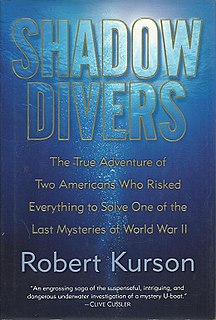 W
WShadow Divers is a non-fictional book by Robert Kurson recounting of the discovery of a World War II German U-boat 60 miles (97 km) off the coast of New Jersey, United States in 1991, exploration dives, and its eventual identification as U-869 lost on 11 February 1945.
 W
WA sonar decoy is a device for decoying sonar. Most are released from submarines to act as a false target.
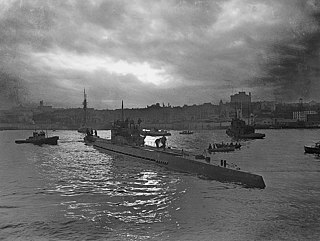 W
WThe Battle of the St. Lawrence involved marine and anti-submarine actions throughout the lower St. Lawrence River and the entire Gulf of Saint Lawrence, Strait of Belle Isle, Anticosti Island and Cabot Strait from May–October 1942, September 1943, and again in October–November 1944. During this time, German U-boats sank about 20 merchant ships and four Canadian warships. There were several near-shore actions involving the drop of German spies, or the attempted pickup of escaping prisoners of war. Despite the 23 ships lost, this battle marked a strategic victory for Canadian forces as ultimately they managed to disrupt U-boat activity, protect Canadian and Allied convoys, and intercept all attempted shore operations. This marked the first time that a foreign power had inflicted casualties in Canadian inland waters since the US incursions in the War of 1812.
 W
WThe submarine film is a subgenre of war film in which the majority of the plot revolves around a submarine below the ocean's surface. Films of this subgenre typically focus on a small but determined crew of submariners battling against enemy submarines or submarine-hunter ships, or against other problems ranging from disputes amongst the crew, threats of mutiny, life-threatening mechanical breakdowns, or the daily difficulties of living on a submarine.
 W
WList of U-boat types contains lists of the German U-boat types used in World War I and World War II.
 W
WThe U-boat War Badge was a German war badge that was awarded to U-boat crew members during World War I and World War II.